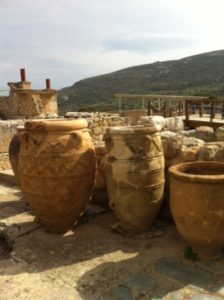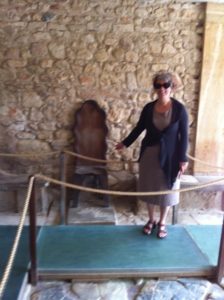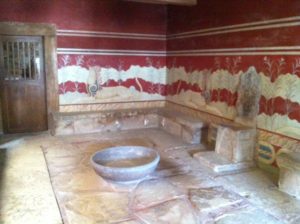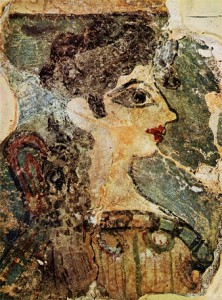

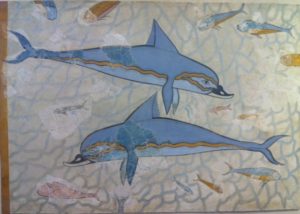 Listen to my podcast on the
Listen to my podcast on the
Minoan world:
Episode #35: Minoan Crete
Yesterday we flew into Crete, the island of the Palace of King Minos and his Labyrinth. After dropping our luggage off at the hotel, which looks out over the sea, we visited Anemospilia (“cave of the winds”) on Mt. Juktas, the site of a temple, thought to have been destroyed by the volcanic eruption on Thera in 1620/8 B.C. At the Heraklion Archaeological Museum, we saw the finds that were found on the site and the famous frescoes and objects from the palace at Knossos. And finally, this morning we went to King Minos’s palace, discovered and excavated by Sir Arthur Evans, The “Throne Room” with its griffin fresco is one of the most well-known images in archaeology. What an “amazing” experience to walk through the halls and across the courtyard of this iconic palace. Strangely enough, the site was closed suddenly when gale-force winds of 50 miles per hour caused injuries to visitors. We lunched at a new restaurant called Pasiphae, named after the queen of Knossos and wife of King Minos. Professor Hunt & his team had arranged for a Minoan feast with foods from the ancient island. The food was delicious and fresh, with island ingredients such as dill, barley, coriander, olives, sesame seeds, honey, and mint. The pottery from which we ate and drank had Linear B inscriptions (Linear A and Cretan Hieroglyphs haven’t been deciphered yet!) and was especially made for us. 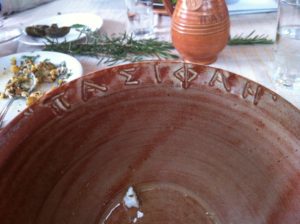 Painted on the chairs were Linear B words for various occupations like goatherd, charioteer, and assistant to the temple. The beautiful placemats had the family tree of King Minos and the Linear B translations for the occupations.
Painted on the chairs were Linear B words for various occupations like goatherd, charioteer, and assistant to the temple. The beautiful placemats had the family tree of King Minos and the Linear B translations for the occupations.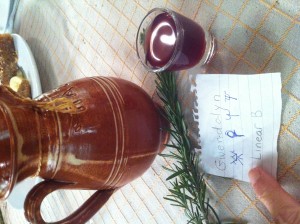 My chair inscription read “local leader.” The crowning glory of this extraordinary experience was a translation of all of our names into Linear B by a professor who joined us just for the occasion! Our day ended with wine tasting and a tour at Boutari, for wine-making on Crete dates back nearly five thousand years!
My chair inscription read “local leader.” The crowning glory of this extraordinary experience was a translation of all of our names into Linear B by a professor who joined us just for the occasion! Our day ended with wine tasting and a tour at Boutari, for wine-making on Crete dates back nearly five thousand years!
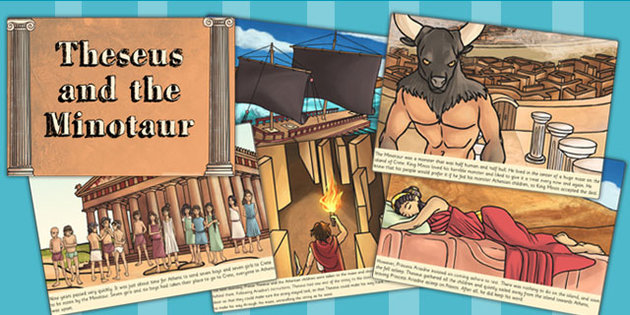
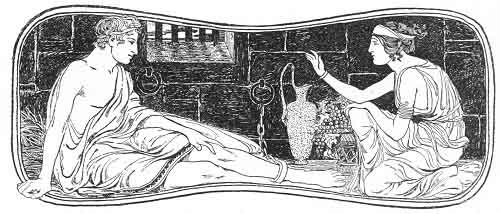
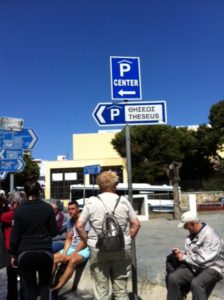 HELLO ROOM 5! This section is addressed to you!
HELLO ROOM 5! This section is addressed to you!
The Labyrinth, where King Minos kept the the half-man, half-bull Minotaur, was built by the great craftsman Daedalus, who was also famous for making a pair of wings for himself and his young son, Icarus. Icarus, in his excitement, disregarded his father’s instructions, flew close enough to the sun to melt the wax that held the feathers together, and plummeted into the sea.
Food I Ate Today:
A garbanzo bean salad with barley, sesame seeds, coriander, tomatoes, feta, and sardines.
I Wonder: I wonder what the sesame plant looks like.
Lesson and Activity: Do you see the street sign? It has the hero’s name on it: Theseus. What do the street signs in your neighborhood say? Talk to your family about what they mean?

